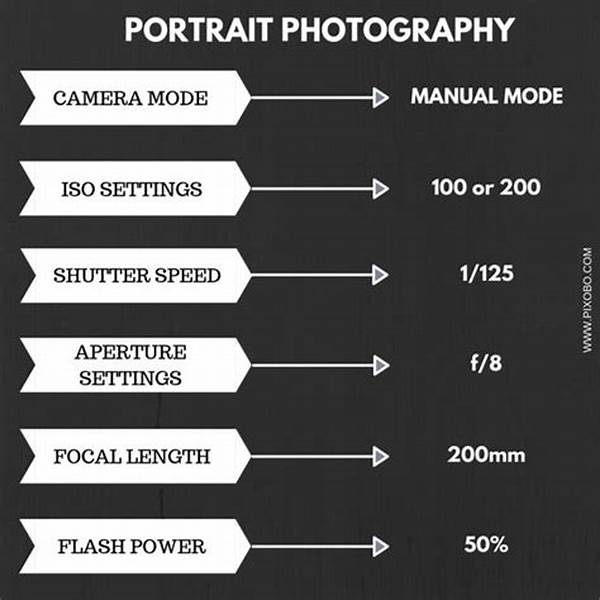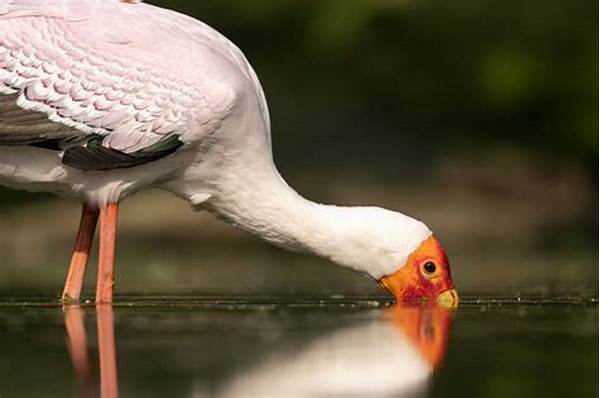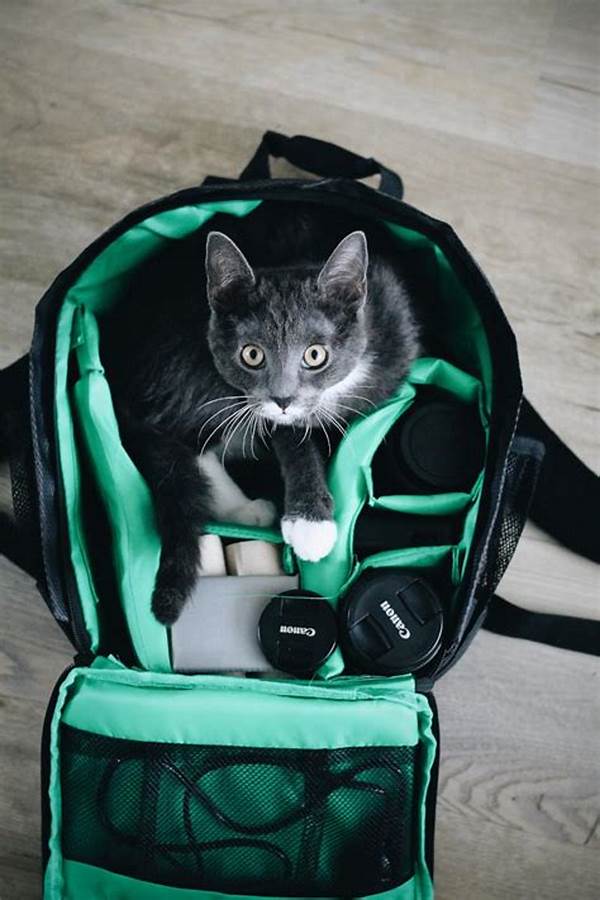Hey there, fellow photography enthusiasts! If you’re like me, you’re always on the hunt for that perfect shot, especially when it comes to portrait photography. It’s all about capturing the essence of your subject, right? But to do that, you need the right tools under your belt – namely, the right camera settings for portrait accuracy. Whether you’re shooting with a DSLR or a mirrorless camera, dialing in those settings can dramatically enhance the quality of your images. Today, we’ll dive into some must-know tips to help you get started on your journey to mastering portrait accuracy.
Read Now : Reusing Materials For Photography Innovation
Understanding the Basics of Camera Settings for Portrait Accuracy
So, let’s break down the basics first. Portrait photography is all about attention to detail and capturing your subject in a flattering light. One crucial aspect is ensuring that you have the correct camera settings for portrait accuracy. The first thing to consider is your aperture. A lower f-stop, like f/1.8 or f/2.8, allows for a shallower depth of field, making your subject pop against a beautifully blurred background. This is what adds that professional touch to your portraits.
Next up is shutter speed. For portrait photography, you generally want a faster shutter speed to ensure crisp and sharp images. Somewhere around 1/125s or faster should suffice, especially if your subject is moving around a bit. Don’t forget your ISO settings either! You want them low (like at 100 or 200) to reduce noise, especially when shooting in good lighting conditions. These basic camera settings for portrait accuracy can be real game-changers for your shots!
Now, let’s not overlook the importance of white balance. Setting your white balance correctly ensures that your colors remain true to life, which is crucial for portrait accuracy. Shooting in natural light? You might want to use the daylight setting, but if you’re indoors, the tungsten or fluorescent settings could be your best bet. Keep practicing with these settings, and soon you’ll master the art of taking portraits that capture the true essence of your subjects beautifully.
Quick Tips for Camera Settings for Portrait Accuracy
1. Aperture Priority Mode rocks for portraits! It gives you control over depth of field, helping you achieve that dreamy background blur with accurate focus on your subject.
2. Natural lighting FTW! Aim for that golden hour glow when setting your camera for portrait accuracy. It enhances skin tones beautifully.
3. Use a reflector. It bounces light, reducing shadows on your subject’s face, and complements your camera settings for portrait accuracy.
4. Stay steady! Use a tripod to keep your camera stable, ensuring sharp images that reflect every subtle detail accurately.
5. Experiment with manual focus. Sometimes the camera’s autofocus doesn’t get it right, and manual focus gives more control over portrait accuracy.
Advanced Techniques in Camera Settings for Portrait Accuracy
Once you’ve got the basics down, it’s time to tackle some advanced techniques for achieving perfect camera settings for portrait accuracy. Have you considered using spot metering? This technique helps you measure the light reflecting off your subject, ensuring their face is perfectly exposed even when the background might be brighter or darker.
Also, think about shooting in RAW. While JPEG is convenient, shooting in RAW gives you much more control in post-processing. This can be particularly useful if you want to make fine adjustments to your exposure or color balance to enhance portrait accuracy. It can also help you recover details in shadows or highlights, giving your portraits that extra touch of excellence.
Finally, let’s talk about lens selection. Your lens choice can have a significant impact on portrait accuracy. Prime lenses, such as a 50mm or 85mm with a wide aperture, are often preferred for portraits since they produce sharp images with a nice background blur. Keep practicing with these techniques, and you’ll notice a marked improvement in the quality and accuracy of your portraits.
In-Depth Look at Camera Settings for Portrait Accuracy
1. Aperture and Depth: Wide apertures (f/1.4-f/3.5) allow for depth control, focusing on subjects while blurring backgrounds, reflecting true portrait accuracy.
2. Shutter Speed Control: To prevent motion blur, use a faster shutter speed, around 1/125s, especially for dynamic portraits.
3. ISO Sensitivity and Noise: Keep ISO low (100-200) to minimize noise, crucial for capturing accurate skin tones and details.
4. White Balance Essentials: Adjust your white balance according to available light for natural skin tones.
5. Spot Metering Mastery: Ensures your subject’s face is well-exposed, even in tricky lighting.
Read Now : “multi-frame Noise Reduction Algorithms”
6. Manual Mode Mastery: Offers full control over camera settings, crucial for consistent portrait accuracy.
7. Lens Selection Savvy: Choose prime lenses for sharper images and control over depth of field.
8. Focus Mode Flexibility: Switch between autofocus and manual focus for precision.
9. Exposure Compensation Insights: Tweak exposure for finely-tuned adjustments in challenging light conditions.
10. RAW Format Benefits: Offers wider post-processing latitude, ensuring optimal accuracy and detail retention.
Practical Applications of Camera Settings for Portrait Accuracy
If you’re ready to take your portrait photography to the next level, let’s discuss some practical applications of these camera settings for portrait accuracy. Imagine you’re at a local park for a portrait session. Start by dialing in a wide aperture setting to achieve that dreamy background that makes your subject stand out. A 50mm lens and an f/1.8 aperture can work wonders here. This blur not only separates the subject but also creates a professional look.
Next, consider the lighting conditions. If it’s golden hour, you’ll want to keep the ISO low to maintain crisp image quality. However, if you find yourself in a shaded area, bump up the ISO slightly to ensure proper exposure. Remember, maintaining low noise levels aids in capturing accurate skin tones and details – a hallmark of portrait accuracy.
Experimenting with perspective and angles is another aspect where these settings shine. By adjusting your shutter speed and using a reflector to fill in shadows, you can capture unique portraits that convey depth and emotion. Being mindful of these camera settings for portrait accuracy will ensure your work stands out, whether you’re shooting professional headshots or candid portraits.
Capturing That Perfect Portrait: Casual Insights
Let’s get real; mastering camera settings for portrait accuracy is no walk in the park, but with some practice, you’ll nail it! First up, that aperture setting. A wide aperture is your best friend for getting that fancy blur everyone admires. Flexing with some prime lenses like the 50mm or 85mm gives you an extra edge, believe me!
Next thing you know, you’re fiddling with the shutter speed like a pro. Making it faster is especially a lifesaver when you’re dealing with kids or pets that just won’t sit still. And don’t even get me started on lighting — golden hour is the miracle worker you need. Matching the ISO setting with your light scenario makes all the difference in getting those luscious skin tones.
White balance is another biggie when you’re after that genuine feel in your images. It helps in keeping the tones right and consistent with reality. So keep at it, and before long, you’ll have folks asking you for tips on how you get those jaw-dropping portraits.Consistency and patience are your best buddies in this craft!
Recap and Final Thoughts on Camera Settings for Portrait Accuracy
So, we’ve gone over quite a bit! From the basics of those crucial aperture and shutter speed settings to advanced tricks like spot metering and shooting in RAW, we’ve unpacked the gear you need to ace your photography game. Understanding how each setting plays its role in enhancing portrait accuracy is no small feat. It’s a blend of technical skill and creative vision.
Let’s not overlook the importance of practice. The more you shoot, the better you’ll understand the nuances of light, focus, and exposure. It’s like learning to ride a bike; a few wobbles at first, but then it becomes second nature. And there’s something so rewarding about capturing a portrait that just glows with life and character, true delineation of the art.
Finally, I hope you’ve found these tips helpful and are inspired to start experimenting more with your camera settings for portrait accuracy. Remember, every great photographer started right where you are now, and with time, you’ll hone your craft to produce consistently amazing portraits. So get out there and start clicking away – your next masterpiece could be just a shutter release away!



